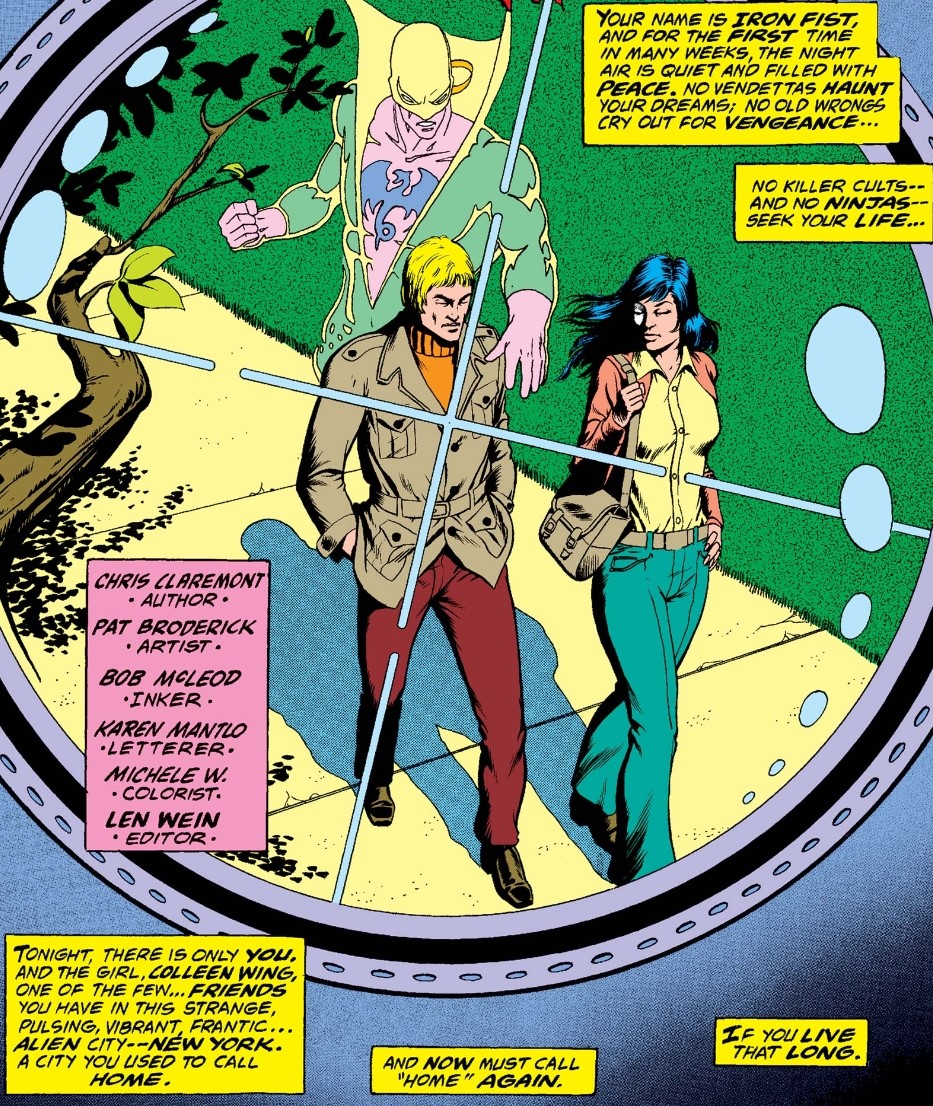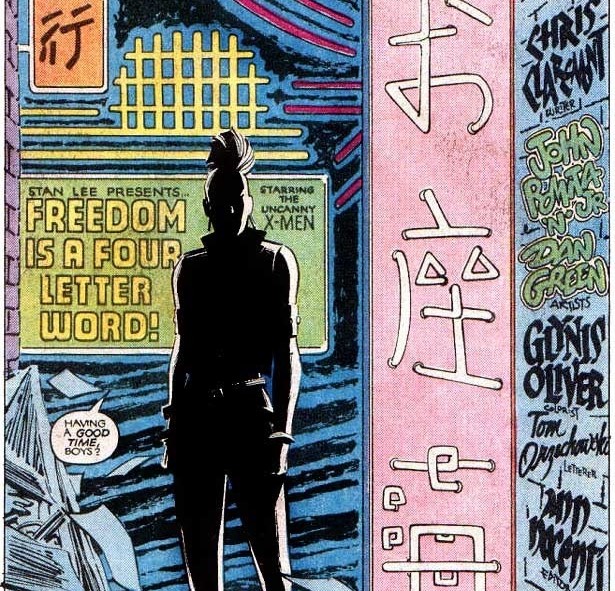The “angry Claremontian narrator” is a weird and delightful stylistic variation that has been elevated to new heights by @XPlaintheXmen. There might be a simple explanation for the odd style shift, wherein Claremont picked up the habit through osmosis with “Iron Fist.” #xmen 1/6 

The angry Claremontian narrator doesn’t appear too often, shows up mostly in early UXM issues, and involves the narrator of the story actively (and aggressively) taunting and demoralizing the characters within the panels of the story. 2/6 

In Iron Fist’s first appearance, legendary author (and Claremont’s mentor) Roy Thomas launched IF with a unique narrative conceit: a rare 2nd person narration style which immerses the reader in the life of Iron Fist in a manner quite similar to a Choose-Your-Own-Adventure. 3/6 

The style become a fixture of Iron Fist stories, and was continued by later writers Tony Isabella, and Doug Moench as the Iron Fist mythology became fixed before Claremont took over the series (first in “Marvel Premiere,” then in an “Iron Fist” title). 4/6 

Claremont inherited Iron Fist the same month that he took over UXM (both have cover dates of Aug 1975). Just a few months later (cover date Dec 1975) the angry Claremontian narrator would become infamous for berating Cyclops over Thunderbird’s death. 5/6 

If this accounts for the narrator’s development, why Claremont applied the Iron Fist narration style to X-Men is a fun question to ask: was he trying it out in a new arena or did he simply slip in the division of his stylistic approaches while writing concurrent titles? 6/6 

• • •
Missing some Tweet in this thread? You can try to
force a refresh






















